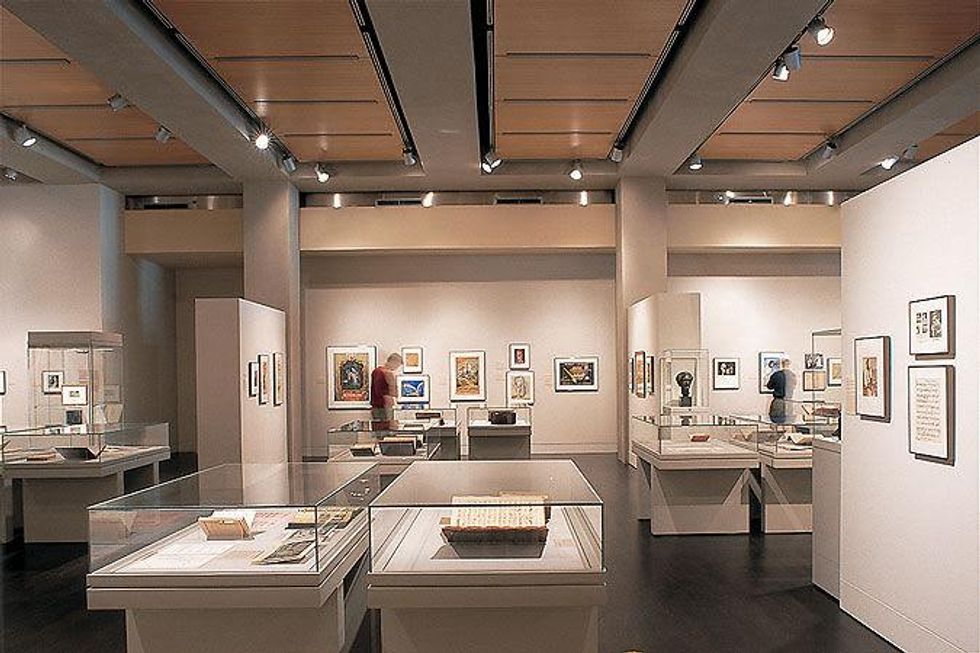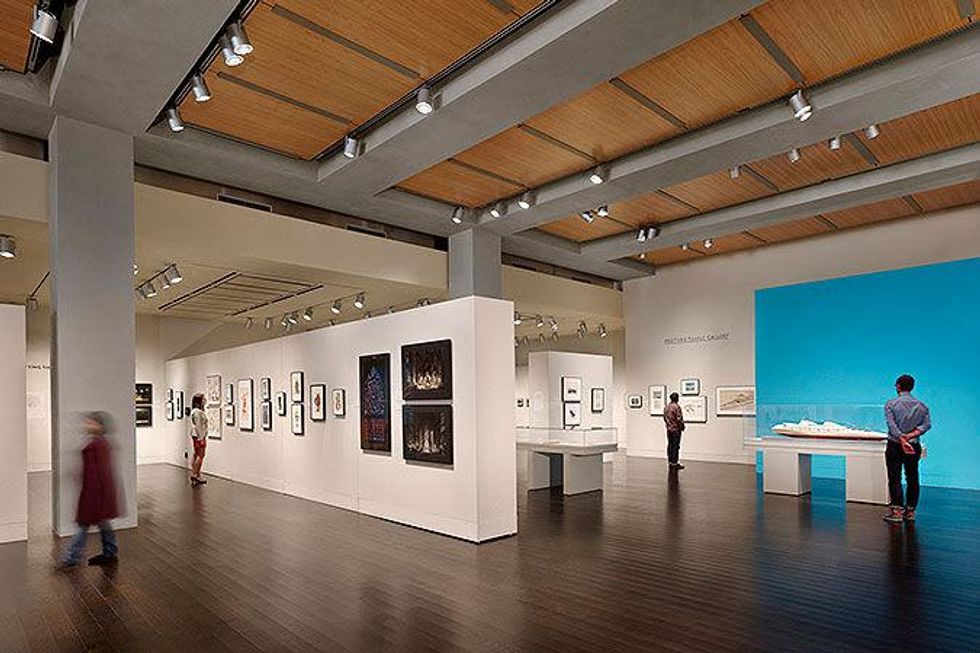Ransom Center Treasures
Explore the extraordinary and unusual treasures hidden at the Harry Ransom Center
Have you caught wind of the priceless stuff that makes its home in the copious Harry Ransom Center research collections? The acquisition of the David Foster Wallace archives in 2010 caused a bit of a flap, for example, and the world’s first photograph is up on permanent display next to a 42-line Bible in the lobby.
Those very archives also hold enough extraordinary and unusual treasures to provide MacGuffins for literally dozens of madcap caper flicks for the humanities-educated masses. Just look at this list of eerie Ransom Center holdings and imagine Nicholas Cage squinting purposefully in pursuit of any one of them.
Edgar Allen Poe’s writing desk
Although it may be no picnic for a would-be culture thief to sneak this one out of the building, just think of the sort of macabre power imbued in its many beveled edges! Legend has it that not Poe but the desk itself wrote many of the enduring works of creepshow mastery to which the man’s famous name is attached. Museum-goers had the chance to stand near and absorb its dark magick during From Out That Shadow: The Life and Legacy of Edgar Allan Poe in late 2009, but it has been contained in the archival depths of the collection ever since.
Salvador Dali’s dream scissors
In 1945, Alfred Hitchcock hired Dali, the era’s most prolific dreamscapist, to design a dream sequence for his film Spellbound. Alas, the film’s producer (David O. Selznick, whose personal papers also reside at Ransom) didn’t like what he saw and hired a new production designer to re-shoot most of Dali’s work. A shot of a pair of scissors cutting though a curtain of eyes was one of the images to survive Selznick’s meddling, and those scissors — charged with the eldritch vibrations pulled in from outer space by Dali’s mustache — persist under lock and key in the Ransom archives.
The personal library of poet, known treasoner and suspected dark wizard, Ezra Pound
Heed this: if you’re a fan of the poetry of Ezra Pound, do not research the life of Ezra Pound. Between his powerfully hateful commentary on Italian Fascist radio during WWII (for which he was indicted in absentia as a US traitor in 1943), his crazy hobo hair and the widely acknowledged grace of his body of art, Pound is among poets what Bobby Fischer is to chess players. It’s practically certain that somewhere in his personal effects are dark spells best kept hid. Speaking of dark spells, though …
The writings and artifacts of known dark wizard and suspected spy Aleister Crowley
Now, don’t get excited. Crowley was probably not a Satanist, so we’re safe on that front. He was, however, a self-proclaimed prophet of the esoteric deity Aiwass and a vigorous believer in supernatural intimacy rituals (to put it lightly), so there’s that. The list of (obviously magickal) things in the Crowley collection includes typescripts of “The Elixir of Life” and “Magick Without Tears,” a set of typed notes on astral travel, a rare first edition of Liber Al (the holy book of Thelema, Crowley's hand-crafted religion) and a hand-painted Tarot set.
The Ransom Center does hold thousands of other objects of significance to the shape of Western culture — these are just the eerie ones with magical powers. Take the time to feel the pulses of aether from these hidden treasures while browsing through Jean Cannon and Elizabeth Garver’s artfully curated feast of historical context at The World at War: 1914-1918, currently up in the first floor gallery.
---
The especially bold may contact the Harry Ransom Center and inquire about appointments to witness much of the powerful magick — or the mundane cultural significance — for themselves.




 Asian vendors gathered for Tayo Na launch part, which celebrated the area's
Asian vendors gathered for Tayo Na launch part, which celebrated the area's  Asian Season ATX celebrates Asian Heritage Month at Austin Beerworks.Photo by Joi Conti Photography
Asian Season ATX celebrates Asian Heritage Month at Austin Beerworks.Photo by Joi Conti Photography